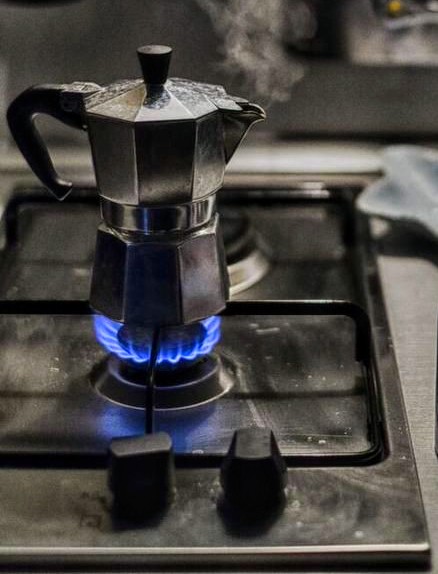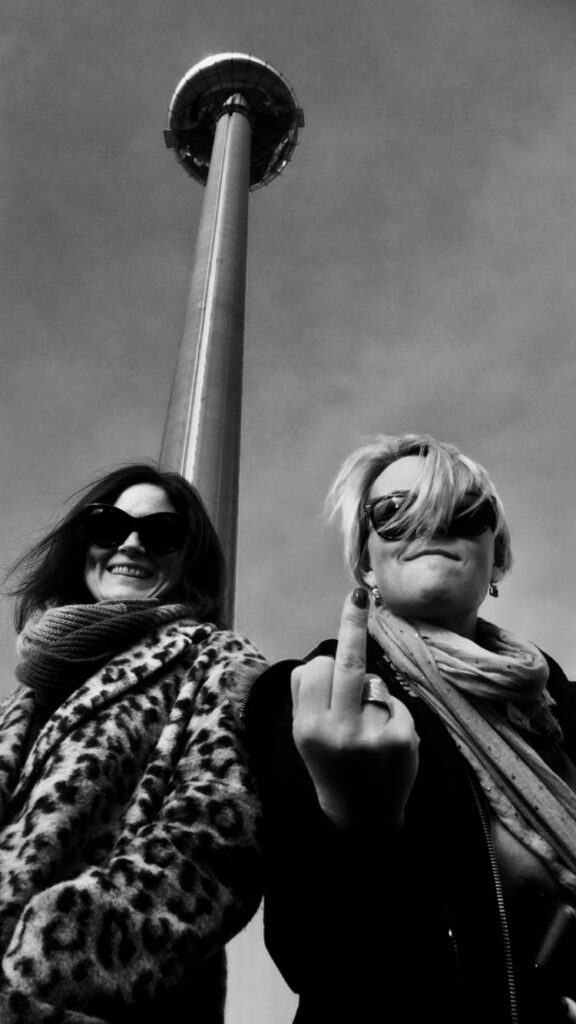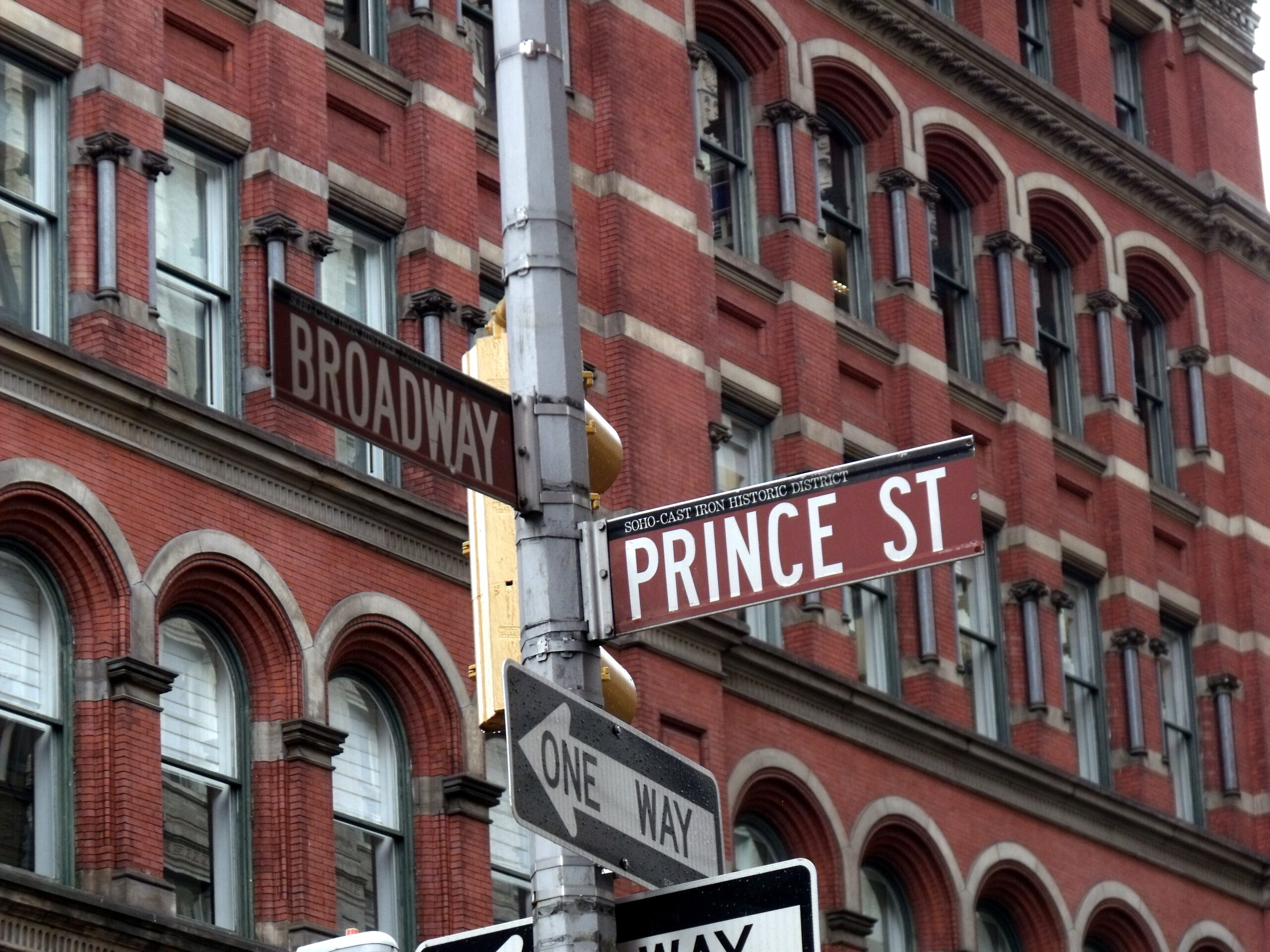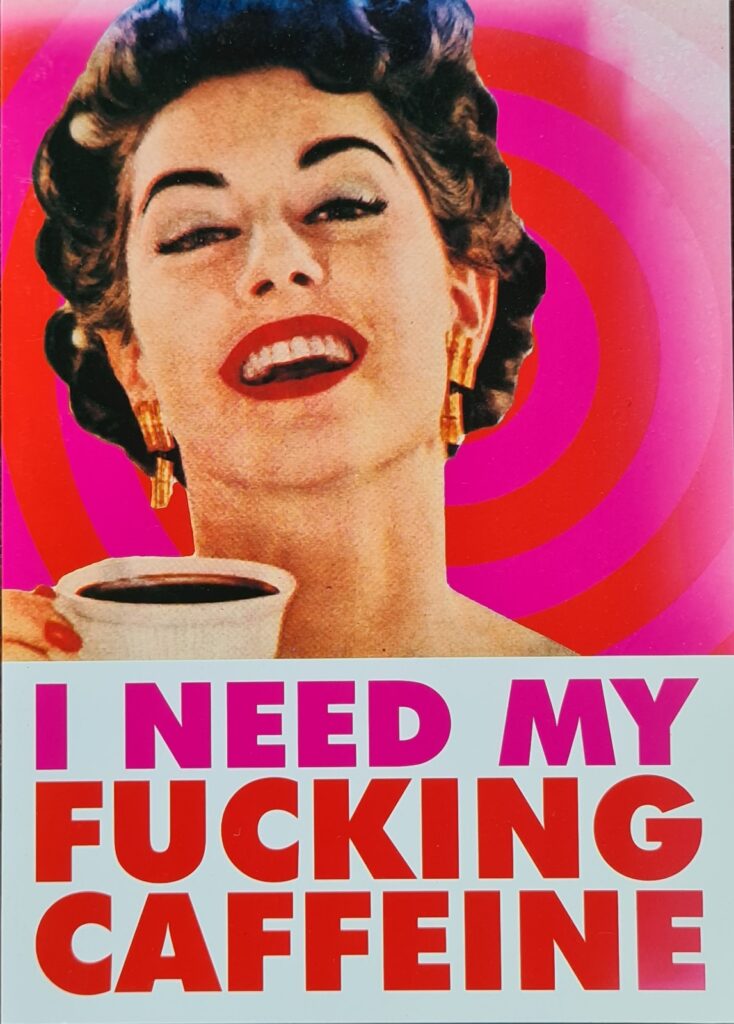My Caffeine was always intended to be the business equivalent of ancient Sparta. The city state was renowned for its courage, for standing up for what it believed in, for its self-discipline and for its skill as a powerful force to be reckoned with in the world. I wanted a company that pushed itself and its clients to be braver, always did what it thought was right, was consitent and true to its word and which was respected by the best companies in the world.
That was my mental model for Caffeine, the way I described what it meant to me and what its purpose was. Caffeine was to be the shock troops of business. And we invented aphorisms appropriate to that mission:
We act with heart and conscience
We are respectfully disrespectful
Always in a hurry, never in a rush
We are your most vicious friend
It was this last one that was most meaningful to me because it summed up best what I wanted to be: firmly on your side but honest enough to confront you with what you needed rather than what you wanted. (Isn’t that what advisors are supposed to be?) Over the years, as I faded from the business, this got diluted (critical friend, then constructive friend) and then dropped. The strength of the business – the strong shot of energy and ideas we set out to be – was, I feel, very true to me. But not everyone wants to be zealous.
Our vision was to be the antidote to conventional consultancy businesses. We were disgusted by the model of consultancies that we had grown up with: armies of junior ‘consultants’ doing much of the work when clients thought they were paying for senior and seasoned advice; long, strung out projects that, cynically, led to other long, strung out projects, manufacturing work; larcenic fees on unjustifiable profit margins; re-cycling (stealing) ideas from elsewhere and presenting them as their own; inches thick documents that were never, could never be, implemented but were, instead, designed to lead to other inches thick documents at even more exorbitant fee levels. They were a scam and we didn’t like it.

The three of us founded Caffeine at a meeting at Stoke Poges Golf Club in the summer of 2006. Although it didn’t have that name then. That came later, in the autumn. For now, the intention was to call our business ‘Consiglieri’ after the mafiosi term for the most trusted counsellor who whispers in the ear of the Don. Our consultancy would be for impatient leaders in a hurry to grow their organisations. It would be staffed only by senior, experienced advisors who had run businesses because this would save our clients time and money: if we were all senior, we would be able to short cut solutions because we would likely have come up against the problems our clients had before.
We conscripted the help of a researcher friend of ours to help us work out a name and our proposition. The name we had been using was causing us problems. People didn’t know how to pronounce it and weren’t as avid fans of The Godfather as we were. In the brainstorm, I tabled Caffeine. It resonated. It was easy to explain: like a strong cup of coffee, we gave businesses a dose of energy and ideas to help them grow. And, once it had been road tested with some potential clients and a few friends, the brief was given to a friendly designer (who soon joined us). He came up with the best expression, both visually and sentimentally, we could have wished for.
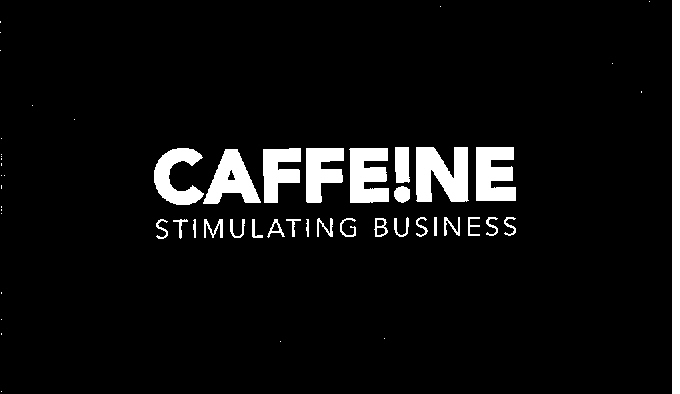
See what I mean? It’s the perfect expression of everything we set out to sell. The only question then was how to harness our different skills to the mission. I was a specialist in business development. Andy was a brand consultant. Chris was a advertising planner. In truth, we never really coalesced. Andy did branding orientated projects and I did new business consulting. Chris did a bit of both and ran the business. (He also lent us £12,000 interest free to fund the start up costs. This sum was paid back within months but it was characteristically kind of him.) For the years that we operated before Chris died in 2013, we had two, almost entirely distinct, revenue streams. They very rarely overlapped. But they both brought in roughly equal amounts. In those days, we were sustained by three main clients: Nissan, Ogilvy & Mather and BNP Paribas. There were many others, but these three kept us fed and watered.

Aaaargh! 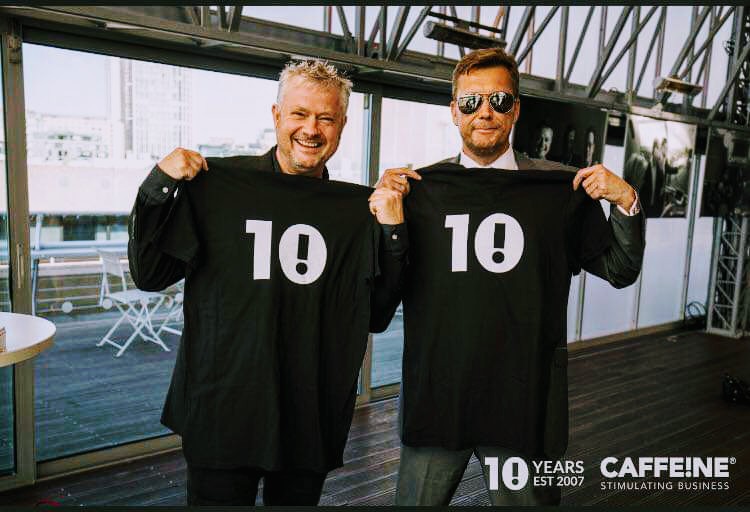
Double figures 
Ronnie & Reggie 
Model equal opportunities employer
Originally, Andy had brought in Sean Smith, his writing partner and a specialist consultant in customer experience, to discuss being the third partner and what our business might be. Sean didn’t like our revenue model. He didn’t see the mission to wean our clients off dependency on us, as outside consultants, as sustainable. We demurred. It was part of our proposition to be the antidote to normal consultancies. We agreed to disagree and, of course, stayed friends. (In an addendum to the story of my Caffeine years, Caffeine is now merged with Sean’s business, Smith +Co. so Andy got what he wanted in the end. The joint venture has now moved away from the business development space and into pure employee engagement and customer experience.)
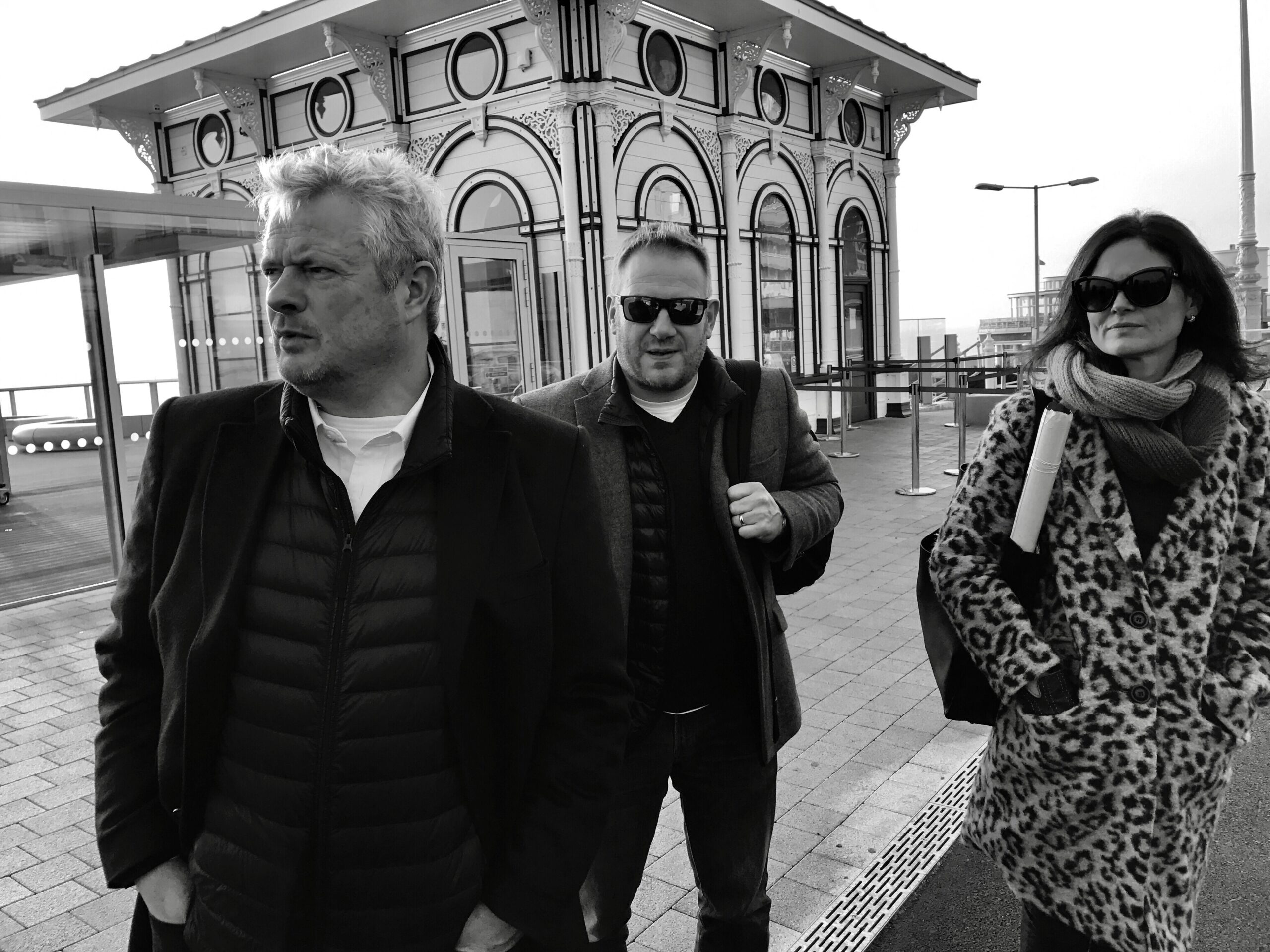
The Caffeine gang roaming the streets 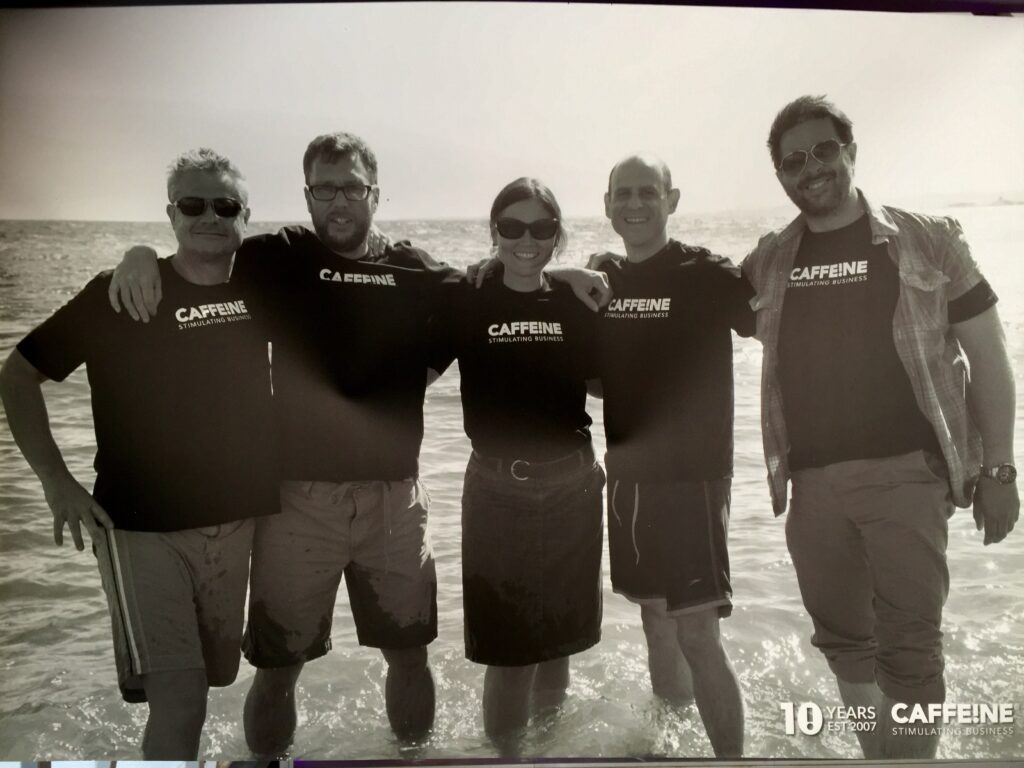
A Nice cup of Joe 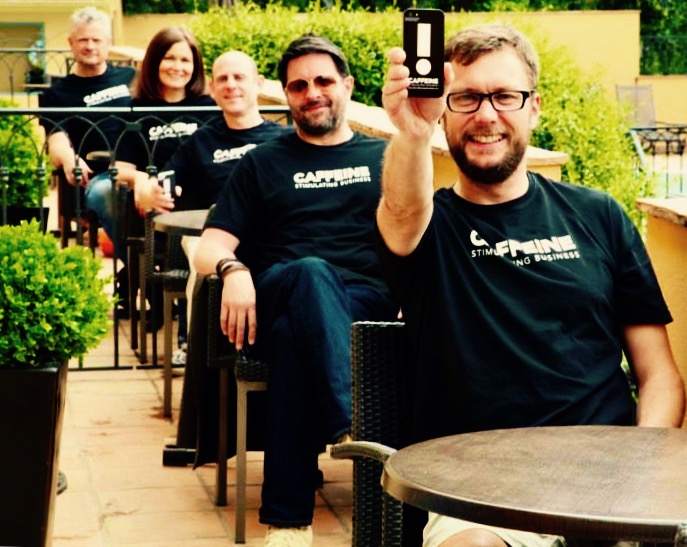
New phone cases
Our business was always intended to provide us with a living. It was never going to be saleable. It couldn’t be because none of us was interested in expanding to the point where we ended up running teams of people and spent our daily lives running offices around the world, doing pay and rations (as HR used to be known before it became a voguish industry unto itself) and moving further and further away from the interesting stuff, which is the client work. Caffeine immediately became a selfish endeavour. Our financial model was selfish: we agreed to eat what we killed. I killed and ate business development clients; Andy killed and ate branding clients. Chris didn’t manage to kill much – it was a great frustration to him that he wasn’t seemingly a great salesman. When he was at BMP, he was in his perfect environment, surrounded by lots of clever people and producing a brilliant product that was very visible (TV ads). Left to sell a concept that never had a visible output, he struggled.
The financial model meant that we met to discuss the business but rarely to collaborate on client work. Which, in turn, meant we largely worked alone. This suited me as I like being in control of my own output. But, as the years went by and I found myself travelling more and more overseas, running programmes and facilitating workshops all over the world, often in three locations in one trip, that palled. There are only so many club sandwiches you can eat alone in your hotel.

Nyon 2015 
Shanghai 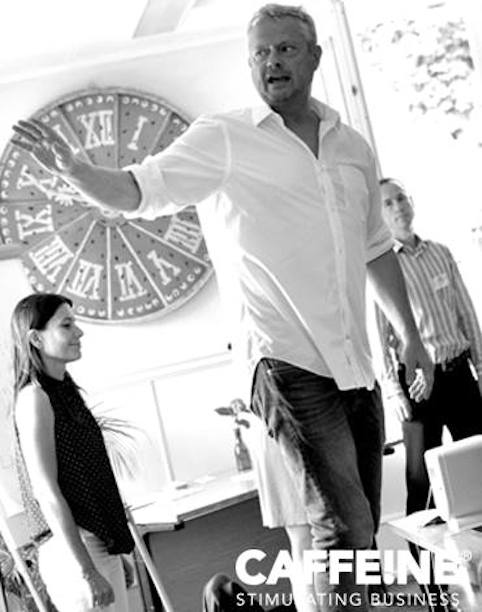
The triumph of will
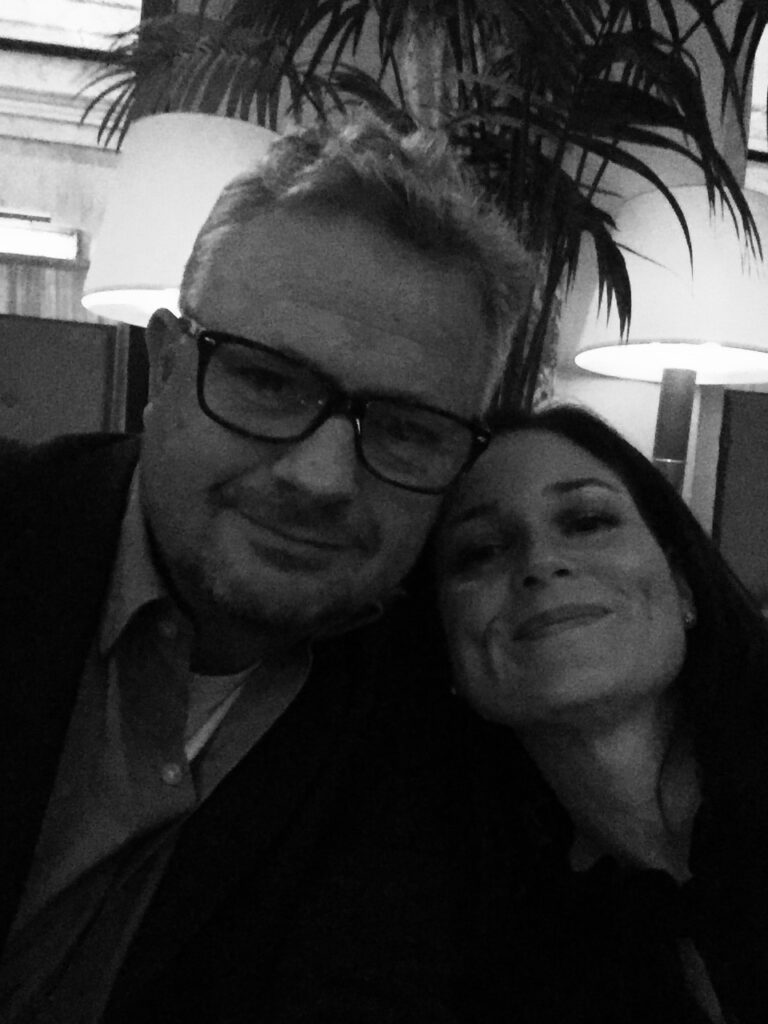
Martinis at The Plaza 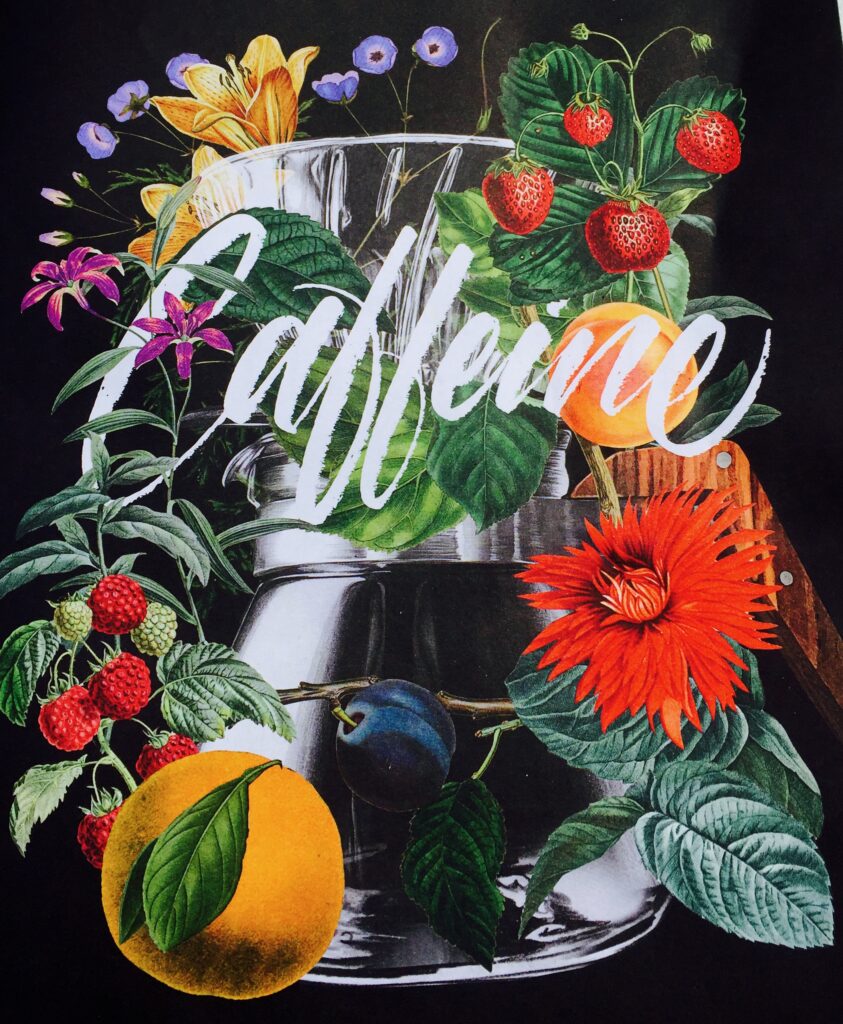

Xmas party 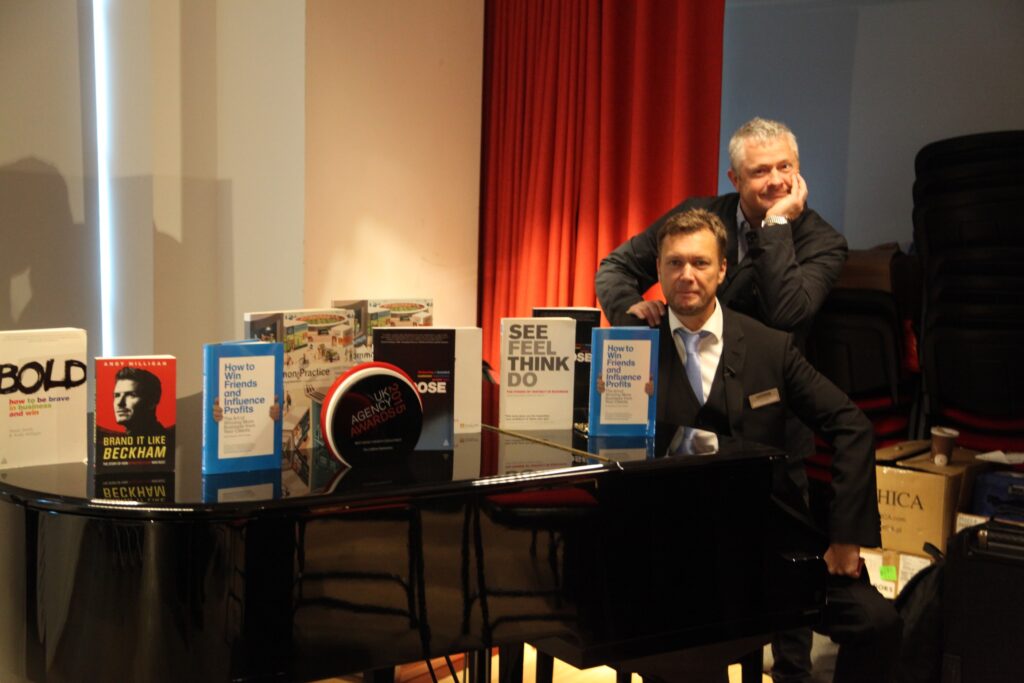
Pete and Dud at the piano 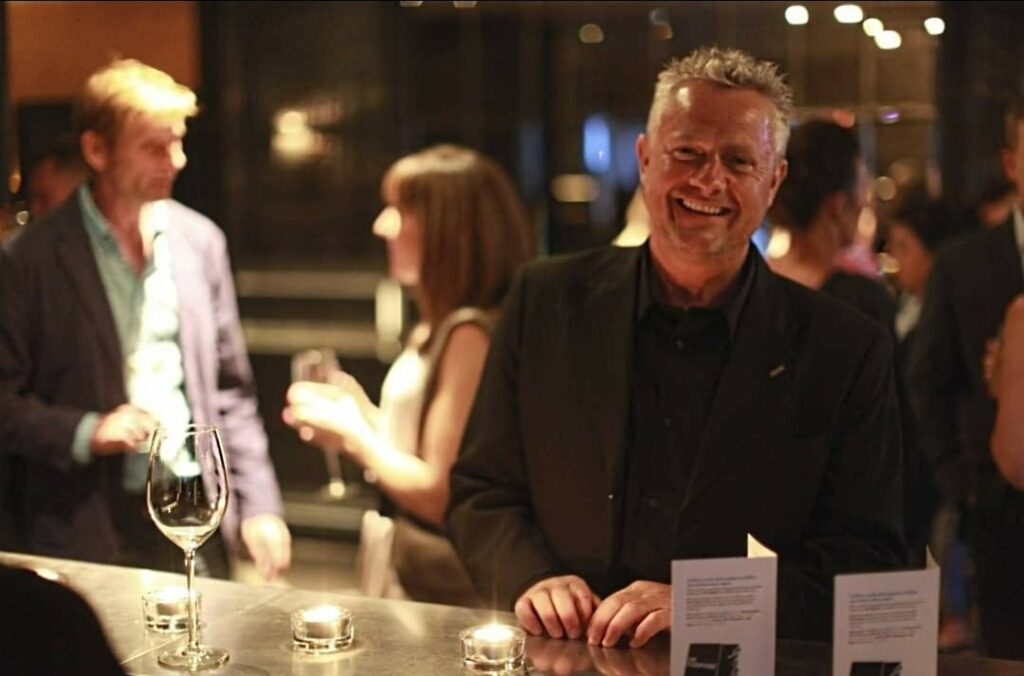
At the bar, always
We changed the model. We pooled all the revenue and that led to more collaboration. We paid ourselves a salary, which made things a little less precarious for us all financially, and began to enjoy working together. I teamed up with LJ, who had joined us as our second employee (the first slot always goes to Annie, who was our first PA/ helper/ fixer) from the world of PR.
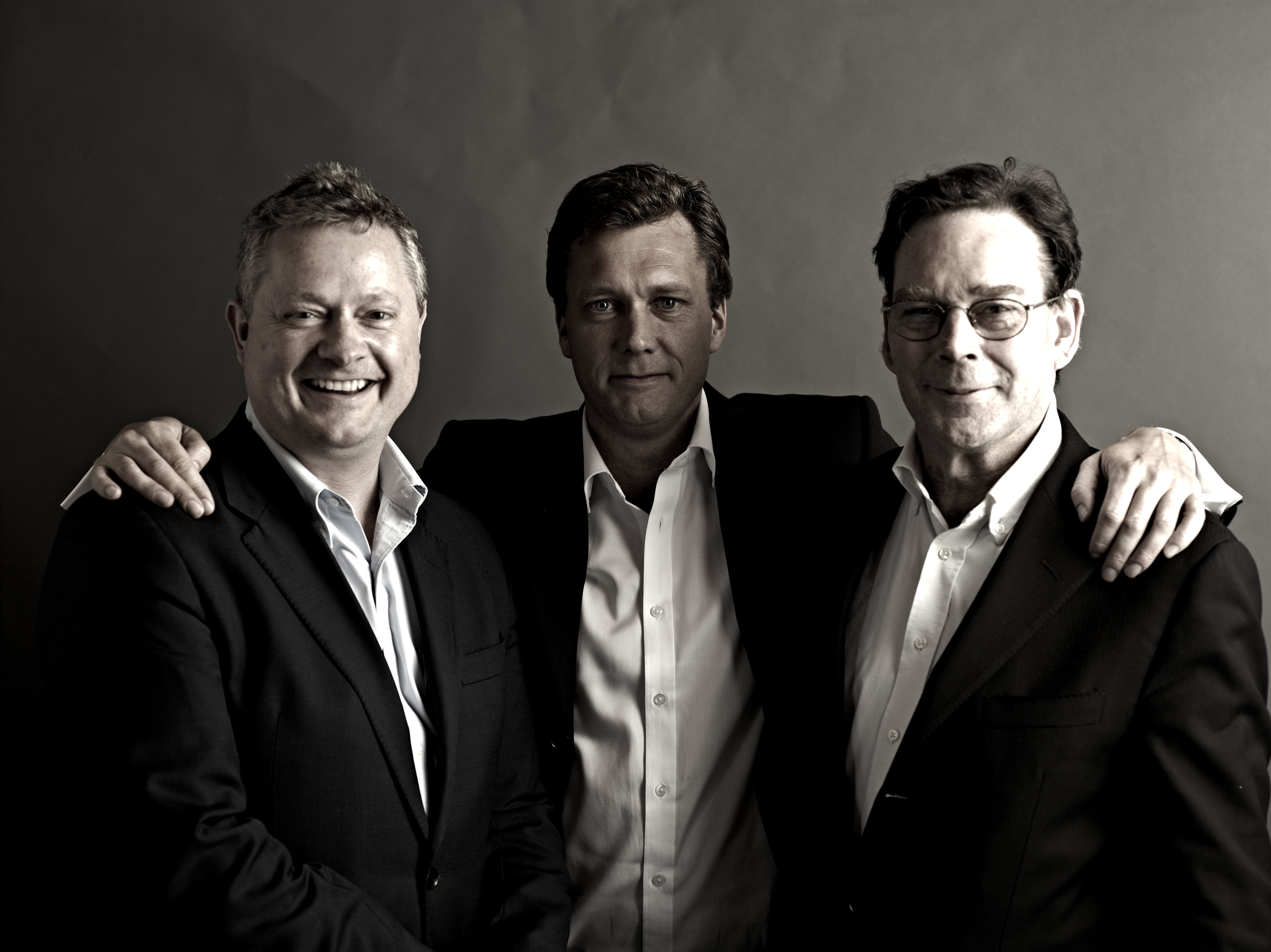
Istanbul March 2010 – Caffeine founders
Even so, it was rare that we would all work together in Caffeine. Our specialisms mitigated against it. However, every now and again, we did. The most memorable gig being a three day conference in Istanbul for our client Miles Young, then the CEO of Ogilvy & Mather Worldwide. Such events were lots of fun. We could combine hard work with hard drinking and also get some r’n’r time to explore the City. We also travelled to Asia and did a tour of Hong Kong, Singapore and Kuala Lumpur, speaking at the local Entrepreneurs’ Clubs and lining up radio interviews on business programmes. We hoped it would raise our profiles in the region and we had also tried to create Caffeine Asia with three people that Andy knew. We didn’t really have anything to offer them, however, by way of either equity or salary (a recurring theme in our attempts to tempt bright people into the fold) and the venture died on the vine.
It was a similar story looking west. We had asked our old boss at Omnicom to join us as Chairman. He did. He was building his own enterprise and was based in New York. He had offices there and a sports marketing business. We discussed the idea of setting up Caffeine New York (obviously this was of great appeal to us) and set about finding a person to spearhead it, working out of our Chairman’s office Downtown. When at Omnicom, I had come across a Brit who had worked in the US for many years and who was a real livewire. He had, I reasoned, the energy sufficient to launch a consulting brand in America and the contacts and the chutzpah. We flew him over to meet Andy and Chris. This was a brilliant example of the sagacity of the CIA’s unofficial motto:
Know what you need to know before you believe what you want to believe
Chris said ‘no’. We outvoted him on our simple majority decision making rule. Chris was correct. Our man was an extraordinarily unstable hire. He was all talk and no trousers, as we would say. A flurry of words with nothing underneath. What we mistook for energy and activism were really just bluster and bullshit. On one memorable call, when we literally had to shout to get him to shut up for a minute, we pinned him down on his claim that ‘PepsiCo are nearly in the bag’.
That’s brilliant. When did you meet them? What’s the job? how much?
It’s conceptual right now
What do you mean ‘conceptual’? You’ve got an agreed proposal?
Not yet, no.
But you have met them?
Not yet, no.
You’ve spoken to them?
Not yet, no. They’re on my list to call.
We realised this wasn’t going to work. Three months after Andy and I had gone over to NYC to get our man set up in our chairman’s office and help him plan the attack on America, we (I) had to have the call to sever the relationship. It had cost our chairman and he generously underwrote the salary, space and severance package himself. It was a humbling but valuable lesson (never rush) but we did do one thing right: when we realised we’d made a big mistake, we acted quickly to rectify it.
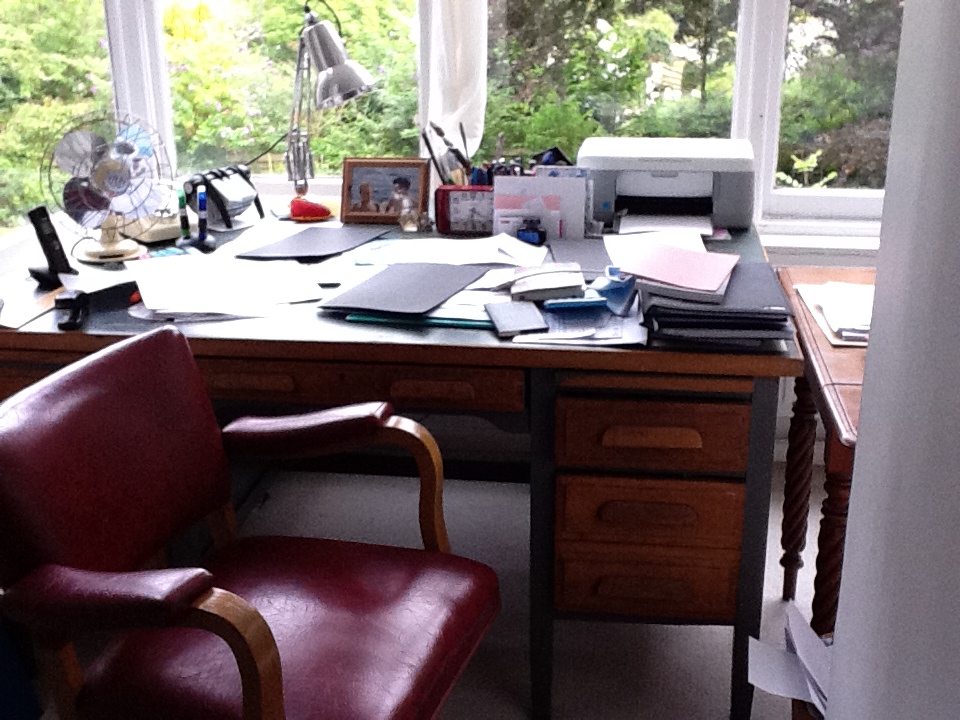
T
The three of us were in NYC for a board meeting. The excuse to go to NYC was to woo our potential Chairman and ask him if he’d take on the role. (But we also liked to be in interesting places for our meetings. We’d already exhausted Britain, having held our strategy away days in Penzance, Plymouth, York, Bath and Exeter. We wanted somewhere more exciting.) At the bar of the Soho Grand hotel, where we were staying, we got a fit of the giggles thinking of all the people we’d collected around us as our coterie of advisors. We had an IT specialist who had dyspraxia and therefore was never available or reachable, he was so disorganised. We had a board advisor (before the Chairman) who was a Cornish independence zealot and a very irascible personality who rubbed us all up the wrong way and was terribly brittle to deal with. And our accountant had more in common with Bob Cratchit, the clerk in Dickens’s A Christmas Carol, than he did with C21st accountancy practices. He used hand written ledgers rather than accountancy programmes. If we were to scale, we really needed to professionalise our set up. Hence the Chairman call.
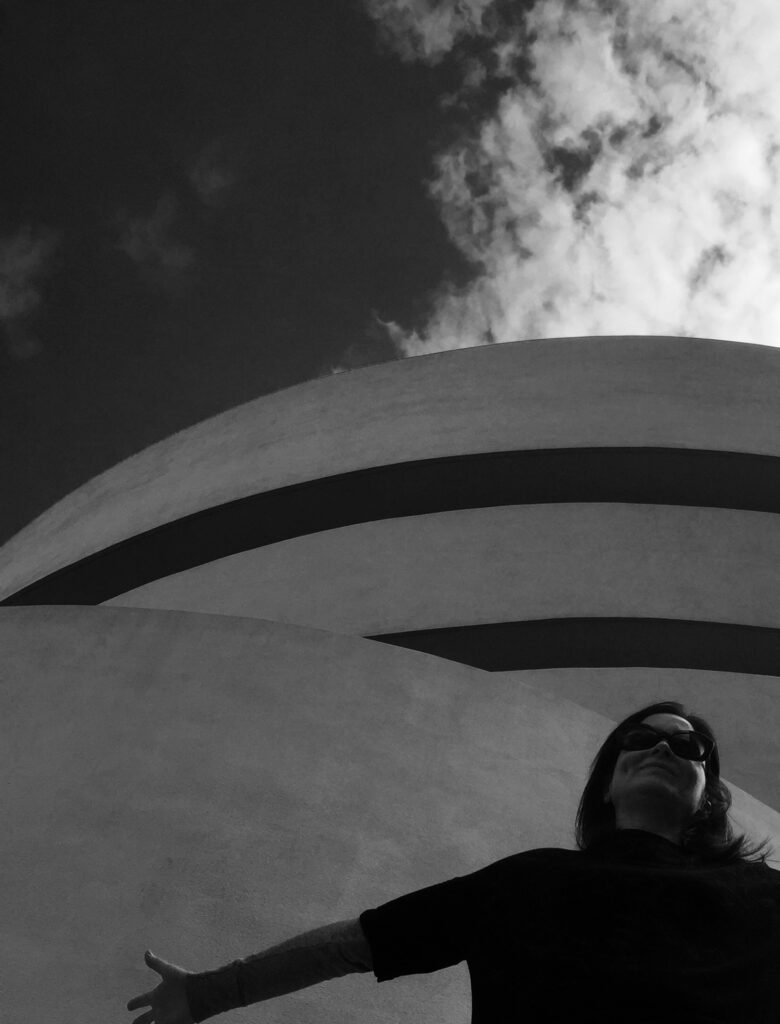
LJ at the Guggenheim
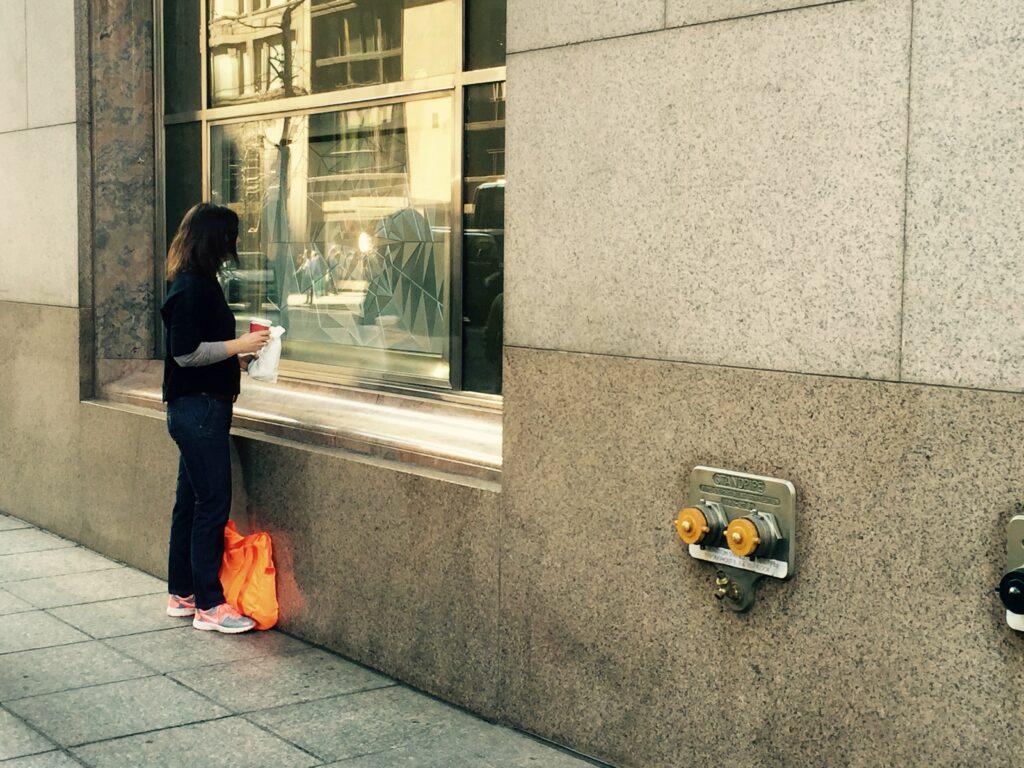
But the Chairman was not all that we had hoped for. In truth, we’d wanted access to his little black book of contacts, which should have been extensive. Instead, what we got, was four meetings a year, a bill for £15,000 a year and the same piece of advice given quarterly on repeat: you need to get an office. No investor will take you seriously nor will you be a serious business until you invest in an office space. We got fed up hearing this. We had set the business up deliberately to work virtually. We had absolutely no use for a physical office. We couldn’t afford the overhead but that wasn’t the point. This was a core part of Caffeine – smart working. Working from home. Working from coffee shops. Working at our clients’ premises. Clustering wherever and whenever we wanted. And we liked that flexibility. We found working everywhere must more stimulating than working somewhere. It suited our temperaments. But our chairman never got that. He was old school. Now, post pandemic, we see that we were visionaries.
Perhaps inevitably, our time with the Chairman came to an end. The death of our experiment with breaking the US market allied to the stuck record of advice that wasn’t useful to us and the venality of getting the quarterly call to fix the meeting with the invoice attached as the only communication between meetings got the better of us all. Chris was charged with terminating the relationship. He couldn’t bring himself to do it. Andy took on the responsibility. But Andy cannot abide conflict or the threat of conflict. Months went by. Invoices got paid. So it came to me to do the deed. I made the call. Explained the decision. The chairman said he’d leave at the end of the year. It was now June.
No
I said
Now
He never spoke to me again. Although he is still perfectly friendly with Andy. And this is the problem with avoiding conflict. Someone else has to do it, when it’s already cost too much time and money, so it has to be done more brutally than it otherwise might have been done. Which causes resentment. That is taken out on the person who has the courage to force the issue. And, to be honest, that’s not right.
One of the ambitions of the three of us was to have some sort of coffee shop. It never materialised although we dallied with it several times in a vaguely serious way. Velleity. That’s what this was: the weakest form of wish. In our heads, we imagined a place where business people – entrepreneurs, start ups, would be entrepreneurs, executives working in corporations, partners at advisory firms, shopkeepers, marketers – could come for a coffee and some consultancy. Advice. Help. A place to think safely and laterally about solutions to issues they all faced. With one another and, more profitably, with us. How to get that next promotion to full partner? What to do to win that next pitch? How to create something clever for the next away day? How to get the team working together more effectively? That kind of stuff.
Could our coffee shop be made to happen? Could it be a converted and Caffeine branded VW camper van kitted out for coffee trading, travelling up and down the country dispensing stimulating advice with every cup? Or could we park ourselves in a Costa or Starbucks or independent coffee shop to dispense our brand of business advice in a joint venture with one of the chains? It has remained a pipe dream. But I can see the novel.
When Chris died in early 2013, after a two year struggle with cancer, the wind went out of my sails. On the back of the break up of a tumultuous and toxic relationship of my own and my own father being given less than a year to live (he lasted three months after that diagnosis, which just goes to show that news like that can hasten our end in its own right), after divorce, after seven years of exhausting global travel and weekly train journeys up and down between Penzance and London, I’d had enough. I needed a break. And I needed to start again. I had gone with my then wife to start a new life together in Cornwall and that had gone awry from day one. I was done.
